5 Unique Photography Experiences to Have in Alaska
![]()
Alaska is known as The Last Frontier, and for those that have visited, it’s easy to see why. As Lindblad Expeditions’ former Director of Photography, travel photographer Ralph Lee Hopkins has photographed Alaska dozens of times in his career. The OM SYSTEM Ambassador says that not only is Alaska beautiful, it also has some of the world’s most unique experiences for photographers to capture.
Full disclosure: This article was brought to you by Lindblad Expeditions
For over 40 years, Lindblad Expeditions has been leading ship-based tours to Alaska, one of the world’s most rugged and pristine destinations. Over 40% of the state’s 365 million acres are federally protected, making Alaska one of the most untouched locations in the world and worthy of its nickname, The Last Frontier.

“Alaska is one of those places that’s almost impossible to describe to people that haven’t been,” Hopkins tells PetaPixel. “The impeccable coastline, dramatic snow capped mountains, stunning fjords, and awe-inspiring wildlife make Alaska a destination that every photographer should visit at least once in their lifetime.”
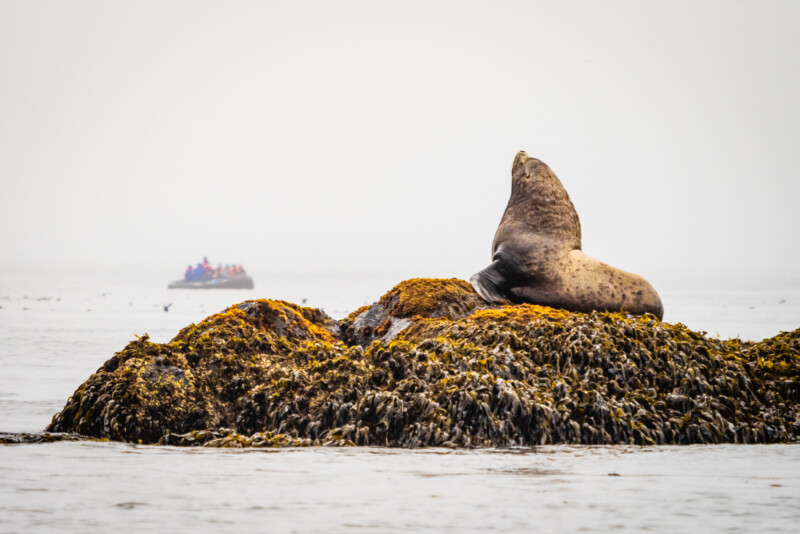
Luckily for Hopkins, his former job as the Lindblad Expeditions Director of Photography brings him to Alaska on a near annual basis. Hopkins has been helping photographers capture portfolio worthy images on Lindblad Expeditions’ trips across the world for 33 years, and in that time, he has observed a number of unique photography experiences that can only be found in Alaska.
Humpback Whales in the Fjords of Southeast Alaska
Each year, Humpback whales migrate thousands of miles. During the winter, they can be found in the warmer, tropical waters of Hawaii or Baja California, Mexico. It is in these comfortable waters where they give birth and nurse their young before they start the long journey north to feed on the abundance of hearty krill and small fish that lie in the Alaskan waters.
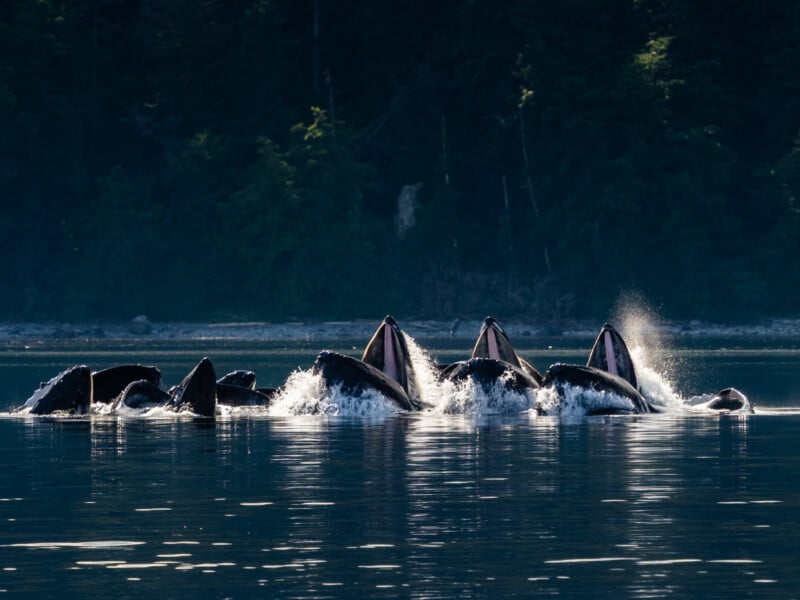
“Alaska is the only place in the world where the Humpback whales reliably do cooperative feeding,” Hopkins explains. “Cooperative feeding is when groups of whales come together and feed as a team. Sometimes it is only five, but in some cases, you can see up to 20 whales working together. One whale blows bubbles through its blowhole, and those bubbles rise and it forms a net that traps the fish. And then another whale, when it’s time to feed, trumpets underwater and you can hear this through the hulls of boats or through a hydrophone. When the whale trumpets, then the rest of the whales come up at once, feeding on the massive amount of fish and krill that is trapped in this bubble net.”
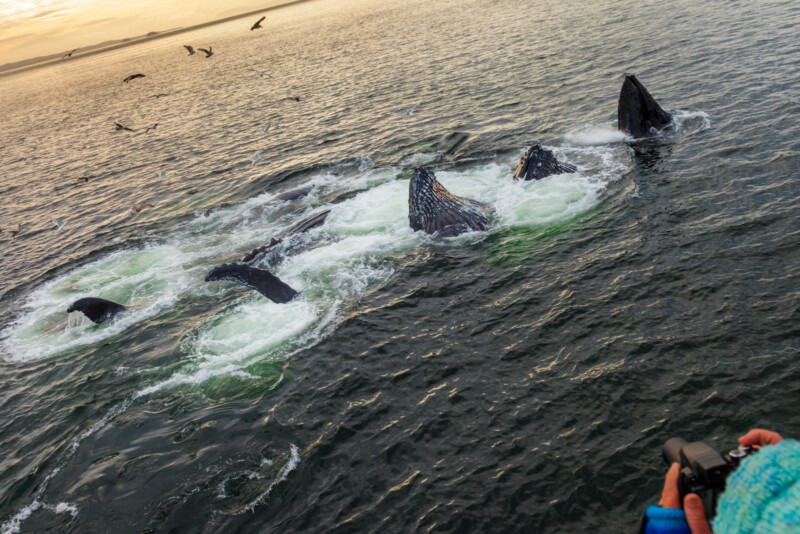
Hopkins says that the natural environment of the Alaskan wilderness can add some stunning backdrops when capturing the photos of the whales.
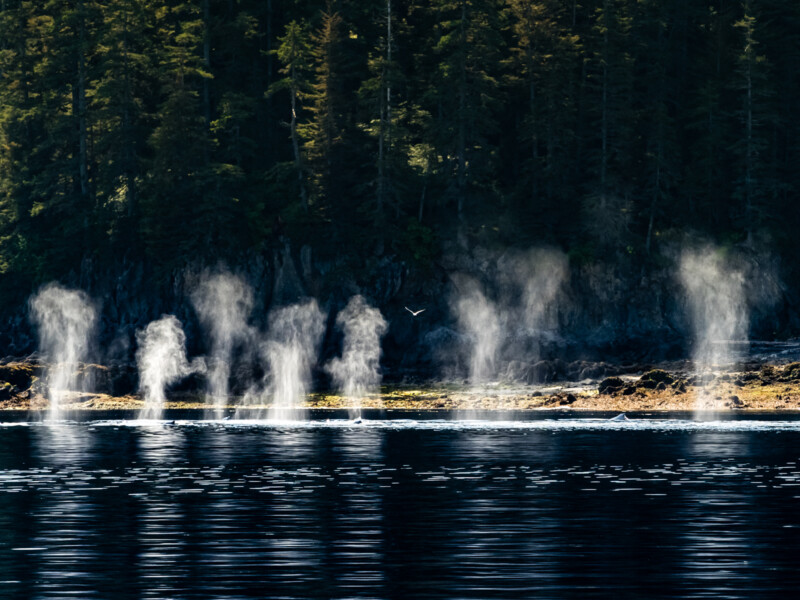
“It is really incredible to witness when their blows go off like light bulbs in unison,” Hopkins describes. “During the right time of day, they will be back lit and it looks great against the shoreline. The whales often use the shoreline to herd the fish so getting the dark trees in the background can really add some drama and contrast to your image.”
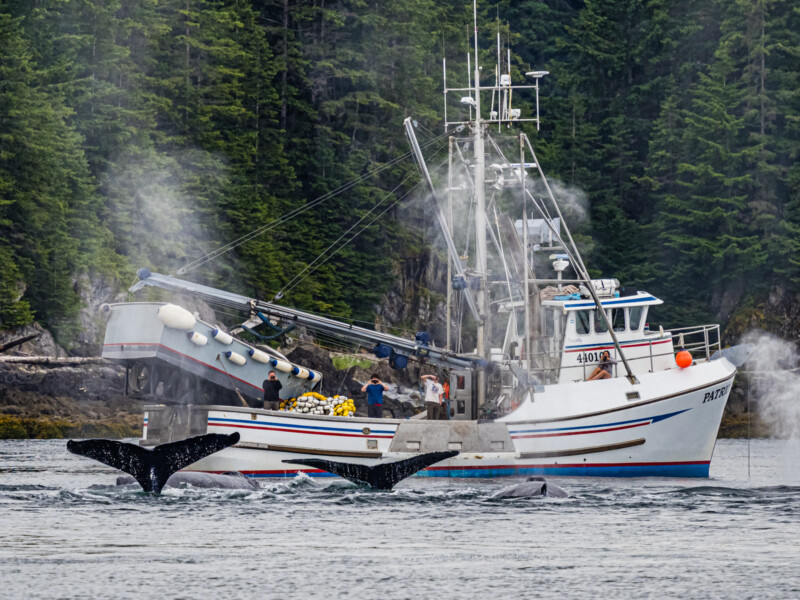
Hopkins always tries to add storytelling elements to his photos, and the fishing vessels that line the whale filled waters provide the perfect story angle. “It is an interesting juxtaposition and semi conflict of resources. Both man and whale after the same prize, and it makes for a great storytelling photograph. It’s also not uncommon for the whales to come right up to the boats, giving us photographers an unexpected treat.”
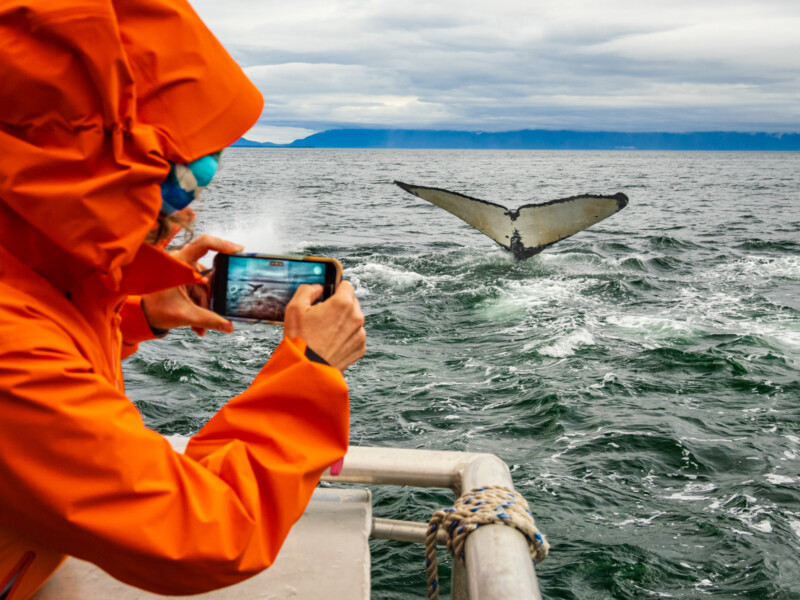
Hopkins emphasizes that photographers need to be at the ready to adjust their ISO and aperture to gain faster shutter speeds, as there will be moments of action.
“The muscle that connects the humpback whale’s tail stock with their fluke is one of the strongest muscles of any animal in the animal kingdom. A couple of pushes on that tail underwater and they can leap out of the water with incredible force. Having a fast shutter speed is crucial to capturing these moments. I also utilize the fantastic image stabilization of my OM SYSTEM OM-1 camera to make sure that the action images come out sharp.”
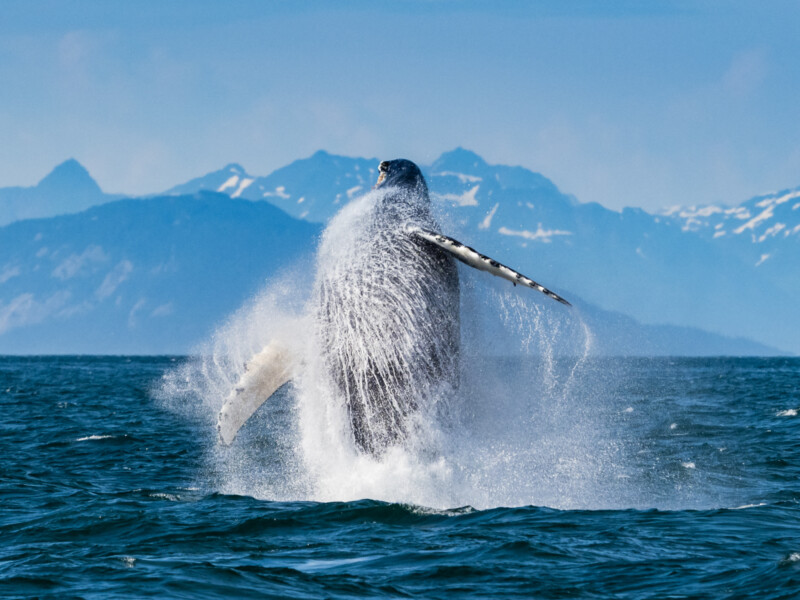
Hopkins says that the summer months of July and August are the most active and reliable time of the year to photograph humpback whales feeding in Alaska.
“The best part about photographing the humpback whales in this environment is that you don’t need a super long telephoto lens,” Hopkins describes. “They are so big, and usually not too far from you, so a medium zoom lens is really all you need. I use the M.Zuiko Digital ED 40-150mm F4.0 PRO with the M.Zuiko Digital 1.4X Teleconverter MC-14. It’s nice and light, and I can easily hand hold my camera on the boat. The lens paired with the teleconverter gives me a nice zoom range for whales that are only a few hundred yards away.”
“The humpbacks are very well known for their surface activities, and southeast Alaska is the best place in the world to watch the feeding behavior. It is just so amazing to be around these incredible, very big whales. We are talking about 50 foot animals that weigh 40 or 50 tons. To be among them and see their feeding behavior, and to hear the sounds, hear their blows, hear them rushing up to the surface. It’s why I do photography. It’s to be in those moments. It’s to be out in this grandeur of nature where these incredible moments are happening. That is why the Lindblad Exploring Alaska’s Coastal Wilderness trip is easily one of my favorites to see the most incredible nature and wildlife that Alaska has to offer,” Hopkins concludes.
Blue Ice in Tracy Arm
The Tracy Arm is an Alaskan fjord located near the state capital, Juneau. In 1990, the fjord gained federal protection with the creation of the 653,179 acre Tracy Arm-Fords Terror Wilderness. Running over 30 miles long, the Tracy Arm Fjord is one of the most beautiful, and accessible, fjords in Alaska.
“One of my favorite things about Alaska is its abundance of fjords,” Hopkins says. “You have these beautiful, long, glacially carved valleys that have been flooded by the sea in between the islands, carving back into the Coast Range of Alaska. Even though Glacier Bay is famous for the number of tidewater glaciers that reach the sea, in my opinion, Tracy Arm is the crown jewel of the region.”
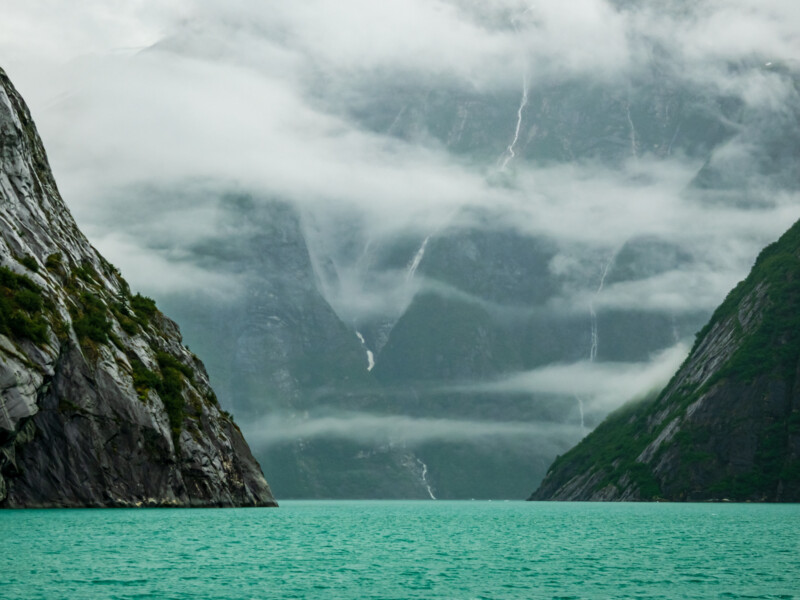
“The ship will take its guests on a winding adventure through the Tracy Arm, about 30 miles from the main waterways,” he continues. “The deeper the ship gets into the fjord, the more vibrant blue and green the water, ice and foliage become. There’s two glaciers at the end, which 100 years ago merged into one glacier. When the ship finally arrives at the South Sawyer Glacier, you can’t help but get overwhelmed by the color of the ice. It is the bluest ice in the world, so it really is a landscape photographer’s dream. You have these blue diamonds of ice against the dramatic green forest background, all with wispy mist surrounding it.”
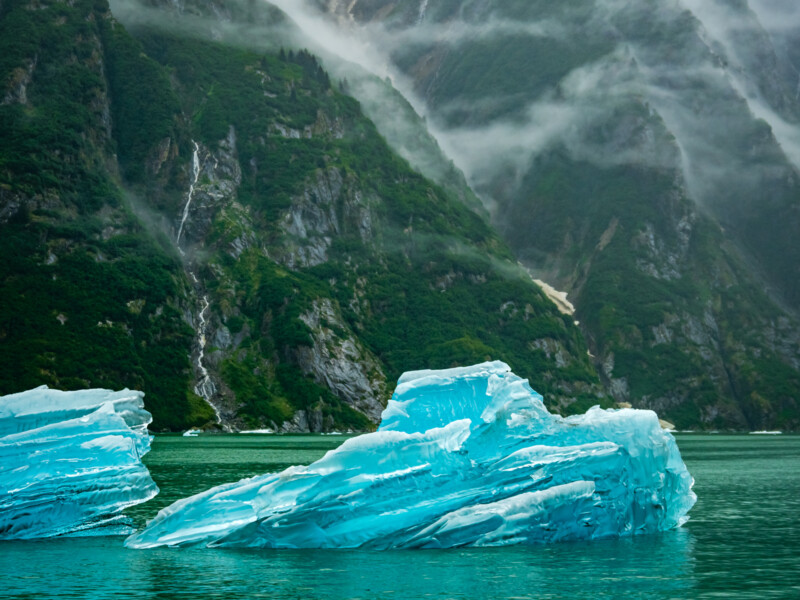
It isn’t uncommon to capture wildlife in these postcard worthy photographs, as bald eagles and harbor seals populate the region. Hopkins explains that harbor seals use the ice to safely give birth to their young while avoiding dangerous Orca whales.
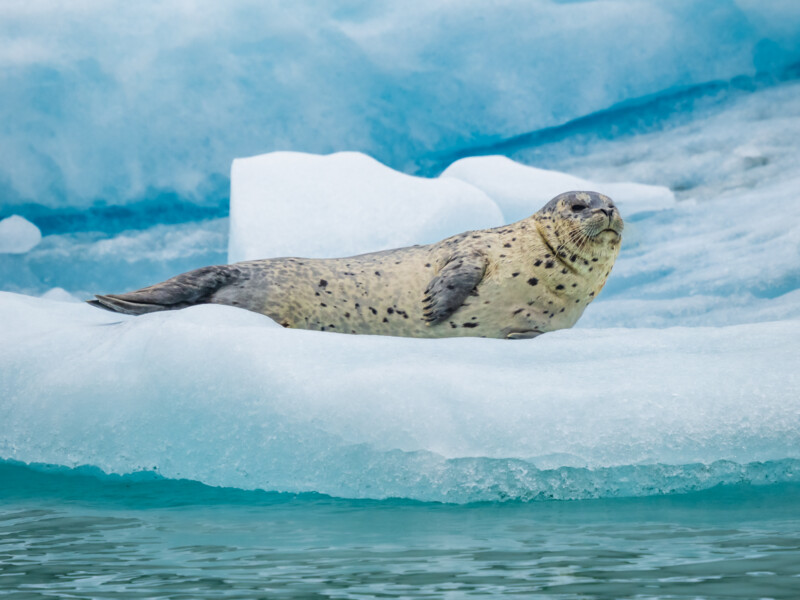
“Tracy Arm is a very special place and a very different photographic story than the humpback whales along the coast. And you don’t want a beautiful sunny day, and luckily, that is one thing Alaska is not known for. I am always hoping for a bright, overcast day which makes the ice appear even more blue, because it absorbs all the warm wavelengths and blue is transmitted.”
Hopkins finds that a wide angle lens is best for photographing the Tracy Arm from a slow-moving Lindblad Expedition ship. While using his OM-1 camera, he often finds himself using the M.Zuiko Digital ED 12-100mm F4.0 IS PRO. “Being a 24mm-200mm 35mm equivalent, it is a great lens for both wide angle shots of the vastness of Tracy Arm, as well as zooming in to compress the landscape scenes. However, being that it is still Alaska, I always have a telephoto at the ready should I need that extra distance to capture the abundant wildlife. In addition to wildlife, however, the telephoto lens can really create some incredible abstract photos.”
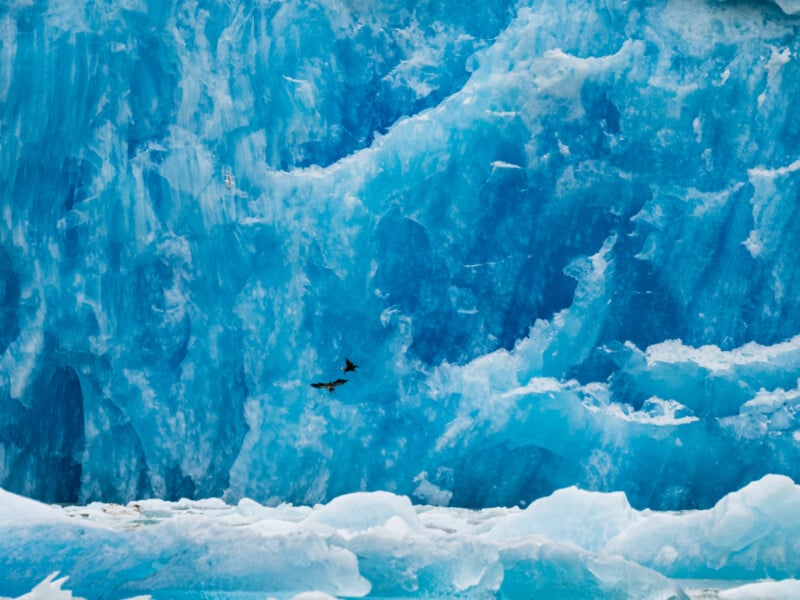
On all Lindblad Expedition trips, a dedicated photography instructor is readily available while both on the ship, and during off-ship excursions. Hopkins says that the one thing he recommends photographers bring to Tracy Arm is a circular polarizer filter. “The filter will cut reflection on the blue ice and it enhances more of that effect of the blue ice, that blue color coming through and in some dark places it almost becomes indigo. The circular polarizer is breaking down the wavelength, so not only are blues coming through but so is Violet, so the ice can look almost indigo.”
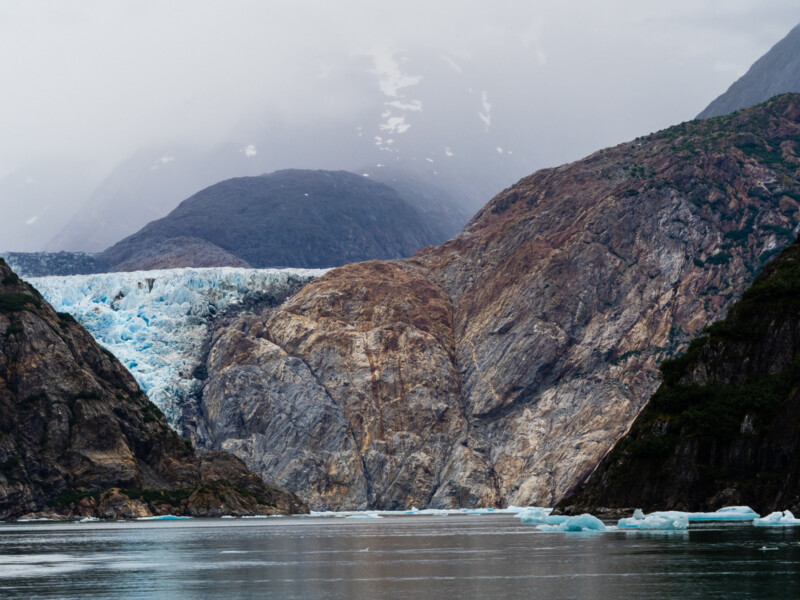
Like the humpback whales, Hopkins says that the experience is not only incredible on the eyes, but also on the ears. “Glaciers are a moving river of ice. It’s ice flowing under the influence of gravity, so they’re constantly creaking. It’s an impossible sound to describe to people. You really just have to hear it for yourself. Once the ship is in position, we will go in small groups on the Zodiac boats to get closer and be at the water level. And then we will turn the engines off. It’s awe-inspiring to be surrounded by this incredible scene on all sides of you in complete silence and just listen to the roar of the glacier creaking and cracking.”
Exploring Alaska’s Temperate Rainforest
Tongass National Forest is the largest national forest in the United States, covering most of Southeast Alaska. Much of the region is temperate rainforest and receives an exceptional amount of rain every year. At 16.7 million acres, the Tongass National Forest is the largest temperate rainforest in the world.
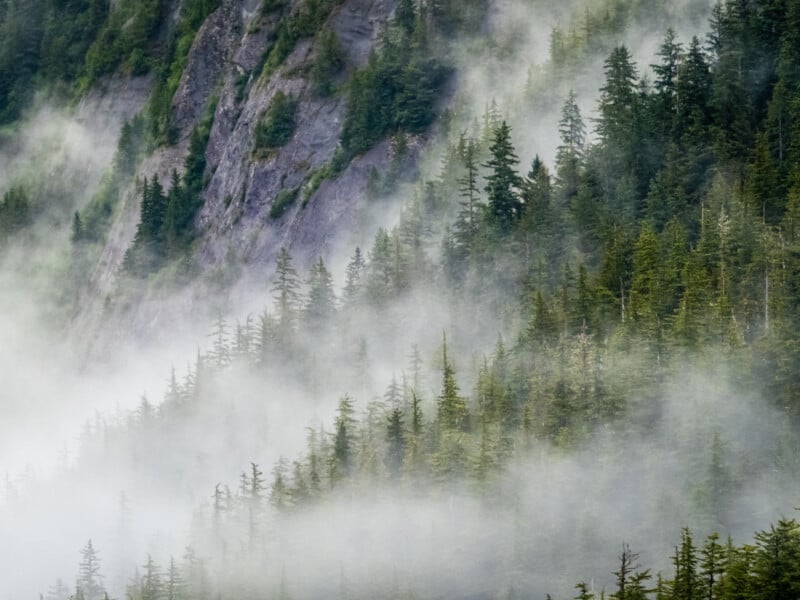
“The Tongass National Forest is truly remarkable,” Hopkins says. “Of course, you have tropical rainforests closer to the equator, where the weather is more consistent throughout the year. However, I was always drawn to the incredible diversity that temperate rainforests, especially Tongass, hold. In the waterways along the shores, you have steller sea lions next to humpback and orca whales, and throughout the trees you have just an incredible number of bald eagles. And those old trees are really something to see. Sitka spruce, western hemlock, shore pine and yellow-cedar just to name a few.”
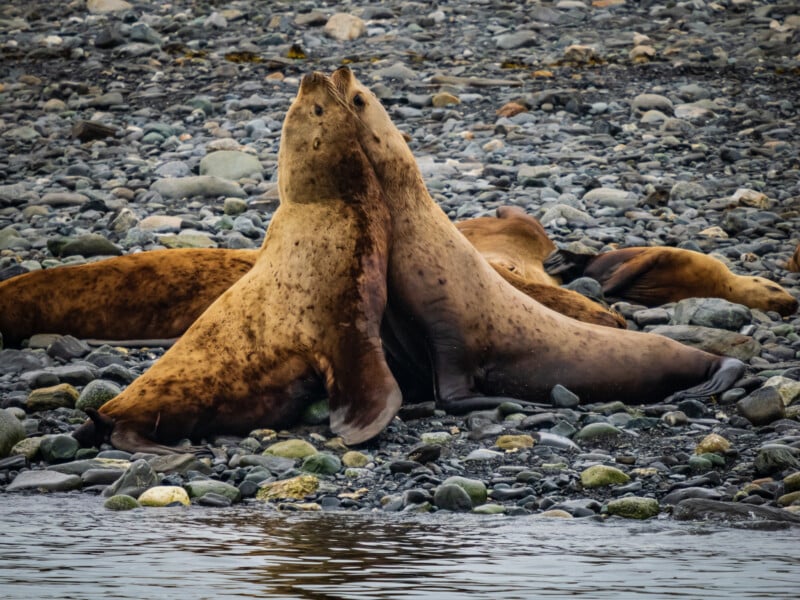
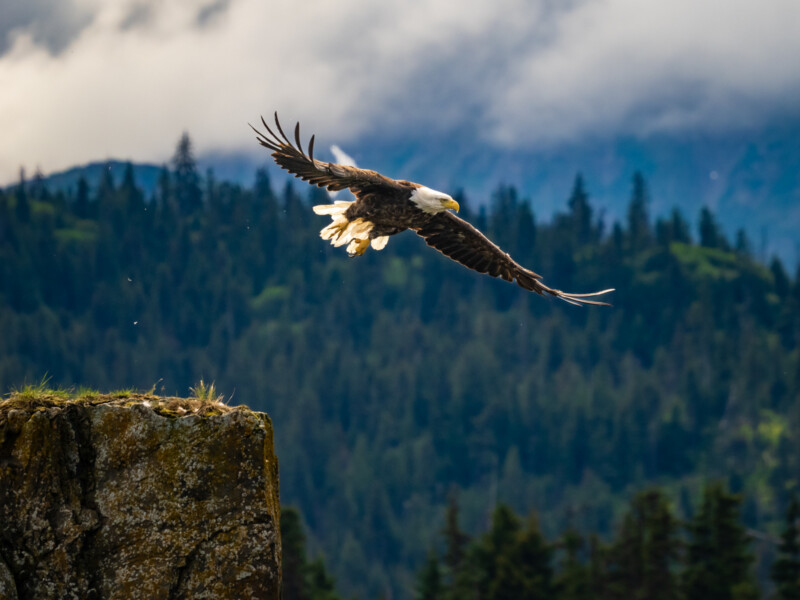
“The amazing thing about visiting the Tongass National Forest for the first time is being spellbound by all the different shades of green,” he continues. “When you have this constant mist and clouds clinging to the vibrant green treetops, it’s a photographer’s dream. When we actually disembark the ship and go into the temperate rainforest, it feels like stepping into a different world. Once you get away from the shoreline, you’ve got the sound of the water slowly drifting off as you enter this vast world of complete silence. It’s mesmerizing. Going deep inside the temperate rainforest in the old growth forest with the spongy under foot, it really makes you want to whisper.”

Hopkins points out that, for all its beauty, Tongass National Forest is not the easiest landscape subject to capture, especially when on foot. Wide angle photos staring up at the tops of the trees can only provide so many photo opportunities, so Hopkins suggests using a macro lens and looking for the small details in the environment.
“The diffused light of the forest makes for some incredible macro photography using my M.Zuiko Digital ED 90mm F3.5 Macro IS PRO lens, no matter the time of day,” he explains. “These situations are where I really utilize the OM-1’s extraordinary image stabilization. The light is low, so you need to open your aperture and increase your ISO a bit, but even then, you might be looking at 1/30 of a second for the shutter speed. So being able to rely on your image stabilization is critical for capturing macro photos in the temperate rainforest.”
Coastal Brown Bears of Katmai
Of course, no trip to Alaska would be complete without photographing bears, and Lindblad Expeditions has a number of itineraries, as well as their sister company Natural Habitat Adventures, that bring photographers up close to these incredible animals. Alaska has the highest number of bears out of any state in the US. The Last Frontier is estimated to be the home of roughly 100,000 black bears, 30,000 grizzly bears, and 4,000 to 7,000 polar bears.
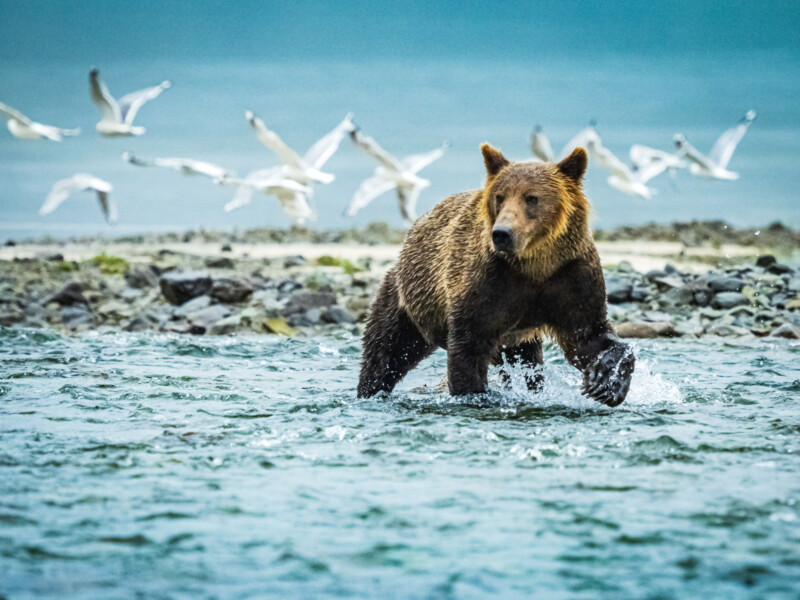
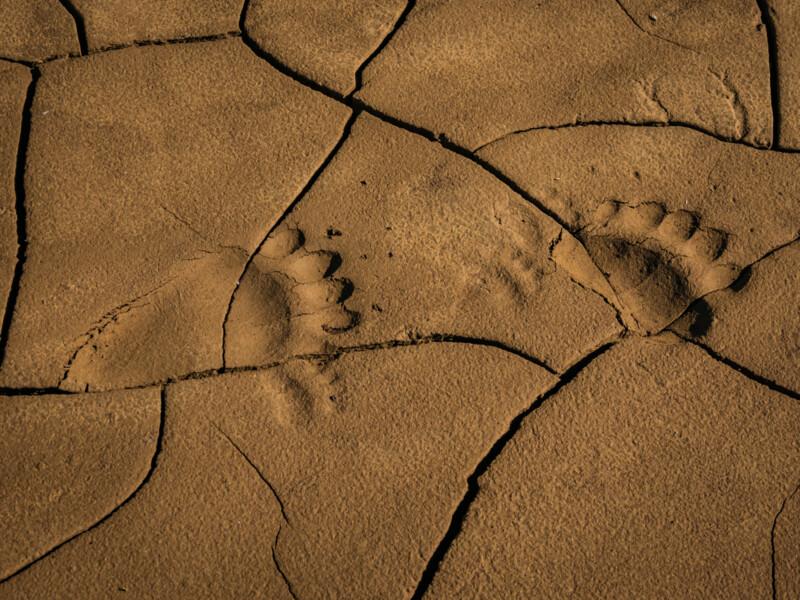
Black bears are the smallest bear species in North America. Brown bears and grizzly bears are the same species, however, brown bears are used to describe bears who live along the coast and feed mostly on salmon. Grizzly bears, on the other hand, live off the coast, in the Alaskan interior. They mostly feed on fruits, roots, grasses and nuts, however, they will occasionally also feast on small rodents or scavenge elk and moose.
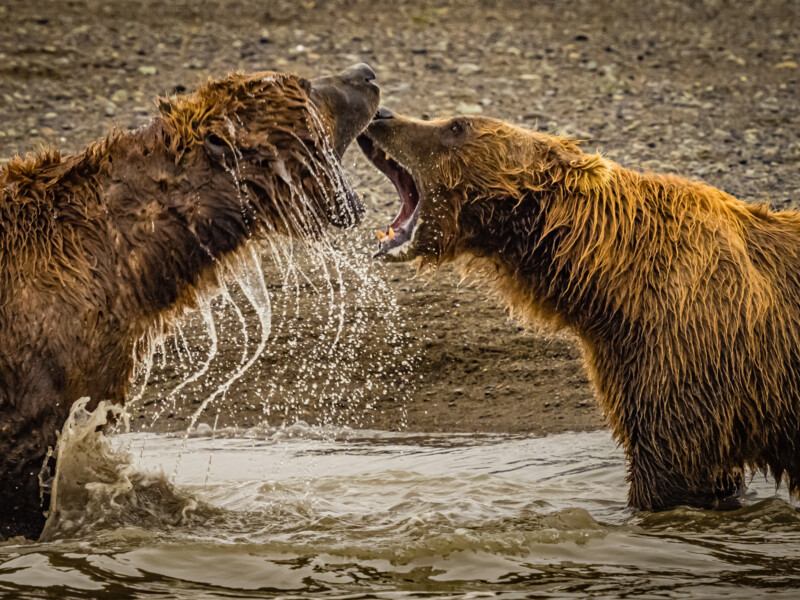
“Katmai National Park and Preserve has the highest concentration of coastal brown bears in the world,” Hopkins says. “Over the years, they have gotten used to people fishing or photographing them from a safe distance. So the bears are considered habituated. They’re still wild, but they don’t see people observing them from a safe distance as threats. You can sit right along the shoreline and watch the bears walk right by you as they move to a different fishing spot. It’s remarkable, and something that every photographer should experience. Bears are obviously very photogenic animals, but they are also incredibly animated, which makes the photographs even better.”
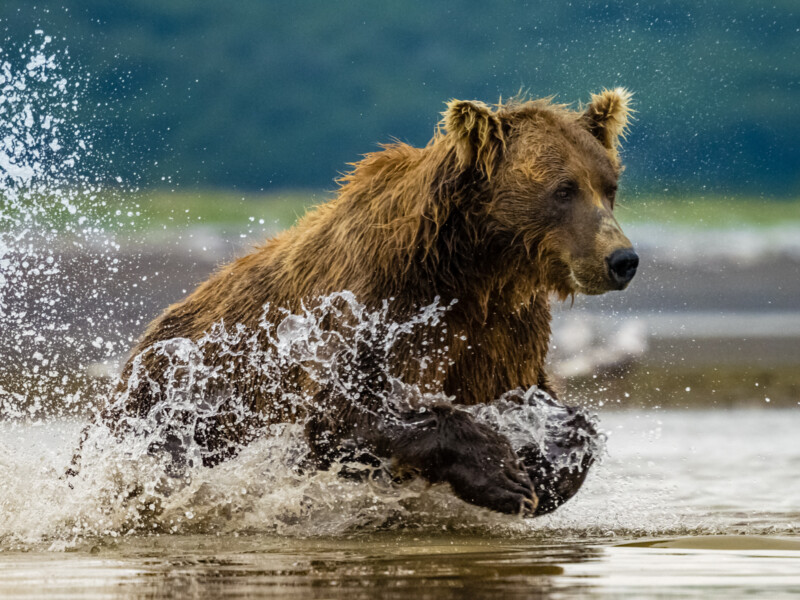
“There is nothing more thrilling than being on the ground at eye level with a 1,000 pound bear running around in front of you; so close, you’re almost getting splashed. It is moments like this that give me gratitude for being able to take my passion and turn it into a career.”
Autumn in Denali National Park
Fall colors have been a popular subject for landscape photographers for decades, however, most don’t book a trip to Alaska to capture them. Hopkins says that is a mistake, as Denali National Park is at its most beautiful during the autumn months as the foliage changes.
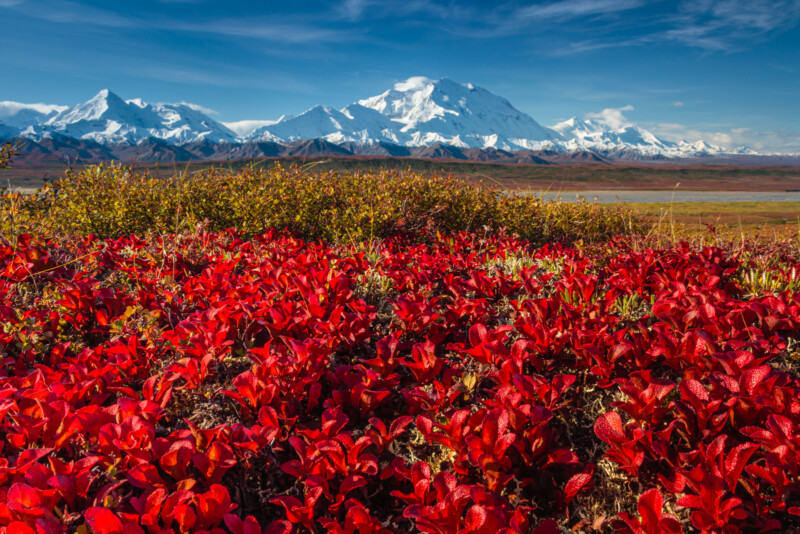
Denali National Park is a 6 million acre protected region centered around Denali, the highest mountain in North America with a summit elevation of 20,310 feet. “The mountain is magnificent,” says Hopkins. “It actually took me three trips to see the mountain, due to typical Alaska weather, but when I did, it was jaw-dropping. Denali really is all about the landscapes. You might see dall sheep, moose, caribou, wolves, and grizzly bears, but the real star of the show is the landscapes.”
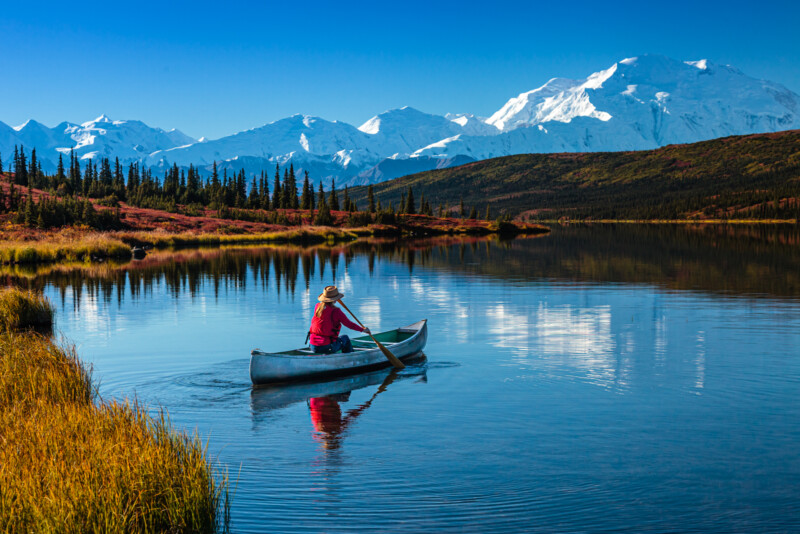
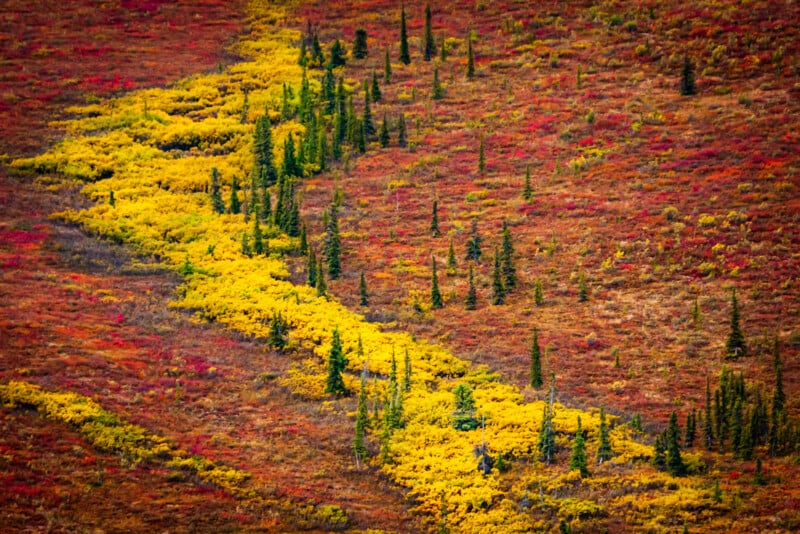
Hopkins stresses that there is no bad time to photograph Denali National Park, but for the best photographs, he recommends autumn. “Across the entire park, the willows will turn gold and yellow, and the bearberry and blueberries will turn red and orange. It’s like a kaleidoscope of color and one of the most photogenic landscapes anywhere on the planet.”
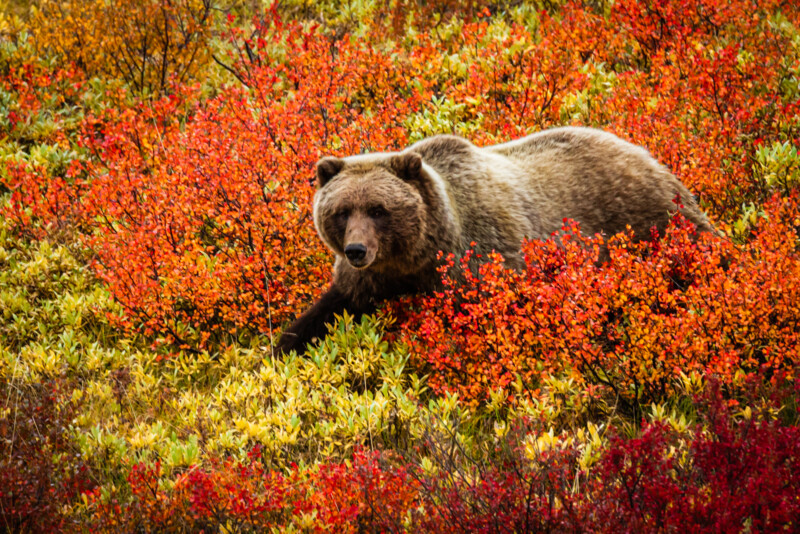
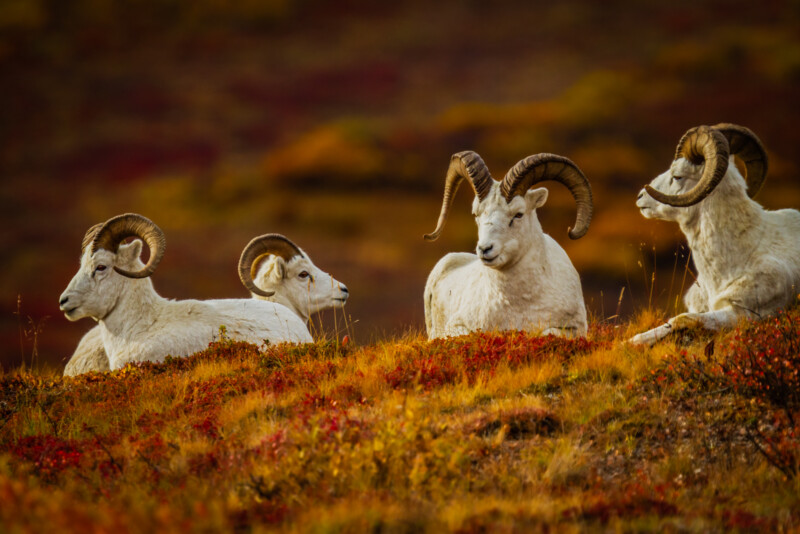
“Denali in autumn is so special because it really hands you the three elements needed to make a great image,” Hopkins explains. “Light, composition, moment. Any light is good light in Denali, from bright overcast, to misty days, to backlit. And then you just use the abundant vibrant colors, which become a crucial part of the composition.”
“In autumn, the conditions always seem to line up,” he continues. “You have crisp, cool mornings with mist and fog…and you get that beautiful scent of wet tundra. Coupled with the endless berries, it’s a beautiful aroma. It just all comes together in the fall. You can’t look in any direction and not see the bursts of color. And if you are lucky to get a grizzly bear in the scene, then the moment really can’t be beat. And if you are even luckier, you might just get one of the most magnificent aspects of visiting Alaska in the autumn: the northern lights.”
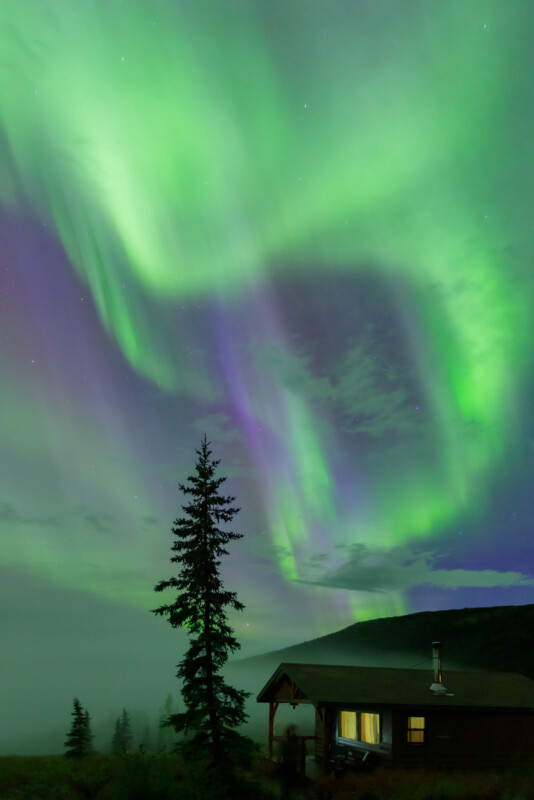
Over a 33 year career with Lindblad Expeditions, Hopkins has traveled the world with his OM SYSTEM cameras in hand. However, for him, few places invoke the wonder and awe that Alaska does. “My first trip with Lindblad Expeditions was to Baja, California and it was incredible. I couldn’t imagine other places in the world that could compare to the experiences that Baja provided. But soon after, my second trip with Lindblad Expeditions was to Alaska.”
“It was quite the shock going from a desert environment to a temperate rainforest with glaciers, jagged mountains, blue ice like I had never seen before, and bears casually roaming the shores while humpback whales breach the surface of the water during a mad feeding frenzy. I was immediately hooked. And being in a ship, the best part was that we were always in protected waters, what is called the inside passage, so the seas are calm and free from the violent waves of the open ocean.”
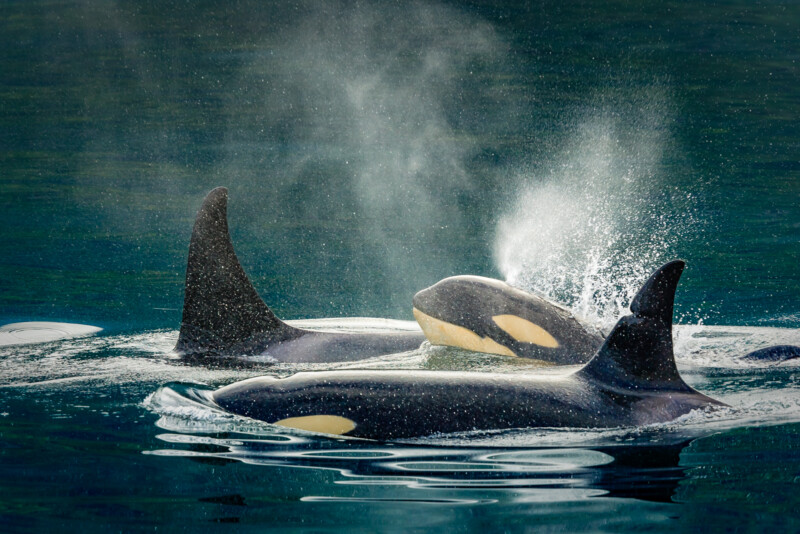
With so many experiences throughout his career, Hopkins says that many of the most memorable moments came from Lindblad Expeditions’ Alaska trips. “Even though it was 30 years ago, one moment that has been ingrained in my mind since it happened was when a pod of orcas came right to the side of our ship. They were right at eye level, just meters away. It was at the end of the day, so the light was incredible. We stood completely still on deck, not wanting to say a word. We just listened to their blows, which was an incredibly surreal sound among the typical calmness of Alaska. It was awe-inspiring. It was such a simple moment. Nothing was really happening, but it was the gravity of the experience, one that could only happen in wild Alaska, that I will never forget.”
More from Ralph Lee Hopkins can be found on his website, and Instagram.
Image credits: All photos by Ralph Lee Hopkins.
Full disclosure: This article was brought to you by Lindblad Expeditions. Lindblad Expeditions is a global provider of small-ship expeditions and adventure travel experiences recognized as the category leader for its pioneering, cutting-edge programming and conservation commitment. Lindblad Expeditions works in partnership with National Geographic to inspire people to explore and care about the planet. The organizations work in tandem to produce innovative marine expedition programs and to promote conservation and sustainable tourism around the world. Guests interact with and learn from leading scientists, naturalists and researchers while discovering stunning natural environments, above and below the sea, through state-of-the-art exploration tools.